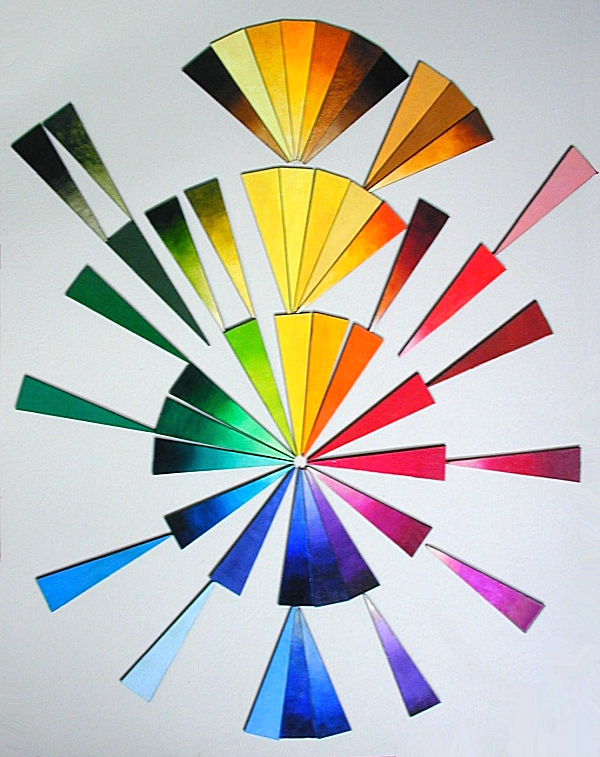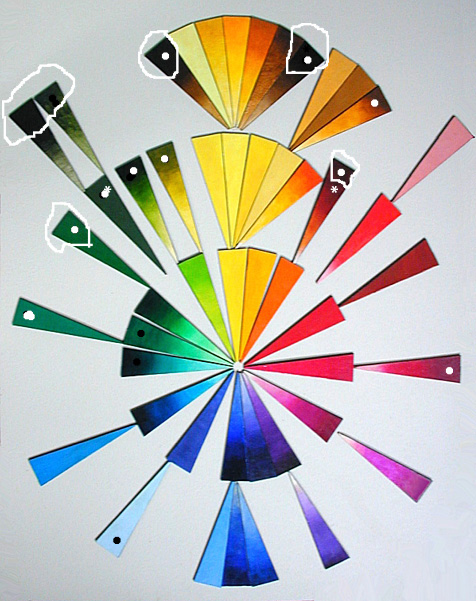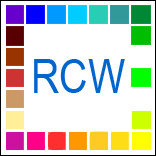Here are all best the pigments available shown as clear media (oil) under-tone tints and their full mass-tone colors.
Mike, if you catch this note, mark the ones on this chip chart that you see no color on.
Here's the webpage with each color clickable to discribe the pigment.
http://www.realcolorwheel.com/colorwheel.htmIt's at the bottom of the page.
_____________________________________________
Hi Don, Here is a quick check on grey and black (lacking temperature ) zones with actual color pigments i.e. the segment color wheel. I converted it to jpeg to lower the mailing size. I'm a little late when it comes to digital finesse. Hope all is well state side. Mike
Attention: the symbol (*) means absolute grey in color. The white and black dots refer to areas appearing of grey or neutral black color.
Your color wheel setup and theory together with actual images are really great.
Hmmm. I wonder how many color blind artists are out there?
Best, Mike

Hi Mike, I see it all now. I'm going painting now out on location. I have two paintings of jacaranda trees going at the same time. 4 hours each.
So later today I will be able to choose a pigment color palette that you can use and see everything you paint in color. Too bad so much of burnt seanna is out of vision, it is a good mixing color. I'll do more when I get back. Don
It was a good day painting.
I can see from your chart that you are really turquoise-crimson troubled. Red and green are not opposite colors. Red and cyan are. both of them you have no problem with.
The greatest thing is you have no trouble seeing transparent yellow, brown side or orange side. Cyan woiks except for it's dark mass tone right out of the tube. Magenta, the third primary is no problem at all, you can see it from mass to tint.
Those three colors (as you know) will make every color including black if all three are mixed in equal porportions.
You're full color paintings will be made by percentages of paint. For an example, medium flesh tones would be 1 transparent yellow, 1 transparent magenta, that would make red, a medium flesh tint would be adding 3 whites. The flesh shadows would be 1:1:.5+2Wt. On the color wheel, Read Red Right. So that percentage would read 1:1:.5+2 the last "2" is white, 1:1:1 would be black.
Do you prefer acrylics or oil? The same pigments are available in both media.
Where you are going to have the biggest problem is mixing your greens, 1:1 is a dark green because they are both transparent. Hansa and cadmium are opaque and make lighter greens. Adding white to this mix makes the color chalkie, adding white to two transparents does not. Generally greens lighten with more yellow, not just white. You don't darken cyan with more mass tone, you dont darken any color with more mass tone, you must add some of the other two colors. If you are using 6 colors to include the secondary colors, just use the opposite color. Primaries have no opposite color, a 1:1 ratio of the other two primaries make it darker.

 Home
Home

 Help
Help

 Search
Search

 Login
Login

 Register
Register

 Broadcast Message to Admin(s)
Broadcast Message to Admin(s)

 « Home
« Home  ‹ Board
‹ Board  Top of this page
Top of this page 
 Pages: 1
Pages: 1

